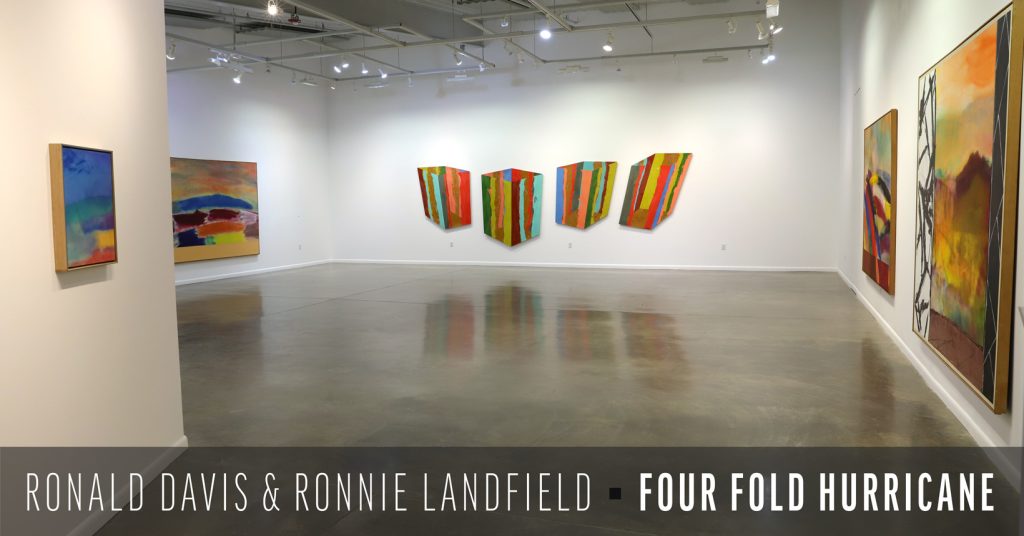
FOURFOLD HURRICANE
On Wednesday December 13, 1967, the Whitney Annual Exhibition of Painting opened in New York City. Little else happened that day in the world: a countercoup against the military junta in Greece and the birth of Jamie Foxx. American participation in the Vietnam War was well underway. Seventy blocks south of the Whitney, the Fillmore East would not open until March of 1968, a few weeks after the Annual would close (inaugurating with a performance by Big Brother and the Holding Company along with Albert King, and in the succeeding weeks the Doors, Richie Havens, the Who and on and on….). Prior to the appearance of the Fillmore East, hipsters could enjoy music and other diversions in Greenwich Village or on St. Mark’s Place where if one found themselves in the club the Electric Circus, they might have witnessed Andy Warhol with his retinue and the Velvet Underground engaged in the multi-media Exploding Plastic Inevitable, a name evocative, at least, of the non-sequiturs of the late 1960s.
The 1967 Whitney Annual was devoted to painting and as mentioned in the accompanying catalog statement, the show, “…aimed to be more national in scope than previous years.”
Ronald Davis and Ronnie Landfield were both exhibitors in the 1967 Whitney Annual. To the Whitney’s purpose of having a national scope for the Annual, Landfield, just twenty years old, a native New Yorker, born in the Bronx and had already traversed the US to Kansas City (attending the Kansas City Art Institute for only several weeks before heading back to New York). And then off to California absorbing its art.
And Davis, born in California in 1937, was raised in Wyoming and had returned first to the Bay area and then to Los Angeles. He had already had a one person show at Nicholas Wilder’s Los Angeles gallery in 1965.
Ronnie Landfield and Ronald Davis are friends. Artist friends. And have been since the 1960s. East coast, West coast, the Pacific Ocean, and for Landfield for decades living within sight of the Hudson River, paths cross, paths diverge.
If we take the 1967 Whitney Annual as a pivot point, Davis and Landfield have for fifty-five years since then, engaged and experimented in their art and confirmed art’s value sometimes only for themselves and sometimes for an audience. Both have survived the ‘death of painting’ of the 1970s, during which dark time, the Modernist project was hung out to dry.
We recall of the late 1960s: maddeningly post-Camelot, with strife amplifying in the streets of the US and abroad, but yes, we landed on the moon — though we have been denied the predictions of the future from that era: still no flying cars, no giant plastic domes over cities, no colonies on the moon. One is given pause.
About their art in their own words:
Landfield, from his website’s “Autobiographical Statement, 1997-2010”
“My inspiration has been my conviction that modern painting is fueled by the combination of tradition and the realities of modern life. Spirituality and feelings are the basic subjects of my work.”
Davis asserts from an essay he wrote that was published in the catalog for his 2002 show at the Butler Institute of American Art in Youngstown, Ohio entitled “A Painting’s Just Got To Look Better Than The Wallpaper….”
“My work is comprised of aggressively deceptive, meaningless, unidentified flying objects that pretend to be rational. Illusion is my vehicle. Opticality is paramount.”
In our exhibition at The SAGG, Davis’s Four Fold from 1969 is a four-panel polyester resin and fiberglass piece that splays out from side to side for over twenty one feet. Owing much to the methods in boat building and surfboard-making each panel was cast in a mold with the liquid resin then backed with a fiberglass panel. The four panels of Four Fold are not-quite-trapezoids. Regarding Davis’s aforementioned “Illusion…”, the panels individually portray a geometrical orientation seemingly listing towards us, they aver to a dimensional ‘center’, as if one could climb up a ladder and look down (or clamber into) a ‘space delineated in each panel’. This approach is something of a throughline from the 1960s to date in Davis’s works. He has re-tooled the perspectival geometries of the Renaissance and has generated a 20th—21st century codebook for the ‘illusions’ in his works as they criticize and restabilize our own sense of balance as viewers. When his works have required themselves to be heretofore undescribed geometrical shapes Davis dove right in, all the while not letting color down.
Hurricane of 2004, remarkably now a twenty-year old work, declaratively horizontal, is an exemplar of Landfield’s practice. In his works acrylic paint is often applied in atmospheric layers, wherein varying colors waft and blend. Discrete segments can be hovering, sometimes abruptly changing hues side by side, or transitioning slowly via tint and shade. In many of his paintings a discrete hard-edged band locates against the organicism, often the solid-colored band is on the bottom of the painting. In the case of Hurricane, with its nearly implied horizon line of a blue mountain, the bottom horizontal band blocks a literal interpretation as pure, albeit abstracted, landscape. Landfield in the past has made straight-up landscape paintings, trees and all. Hurricane, I submit is not one of those. Hurricane thrives as much on such an association of landscape as it does on skipping away from same. Referring to his ‘Autobiographical Statement’ quote above, it can be noted that Landfield is unafraid to embrace the numinous and whatever confirmations that provides.
Both Davis and Landfield ‘extol’ and advance the properties of the materials they use. Their works are evidence of that. For our 2024 exhibition at the Sam and Adele Golden Gallery these two artists are not an oppositional pairing, even though the works might seem to the casual observer to be light years apart. More so, parallaxes can be observed, maybe as East Coast to West Coast modes of energy, or as points of contact hovering around blue or green hues.
Applying to both regarding their art over the past six decades, this from Landfield’s Autobiographical Statement: “The thing is they are always changing.”
Jim Walsh, January 2024
Exhibition through March 8, 2024 - to learn more about these artists visit their websites:
Ronnie Landfield
Ronald Davis

Recent Comments